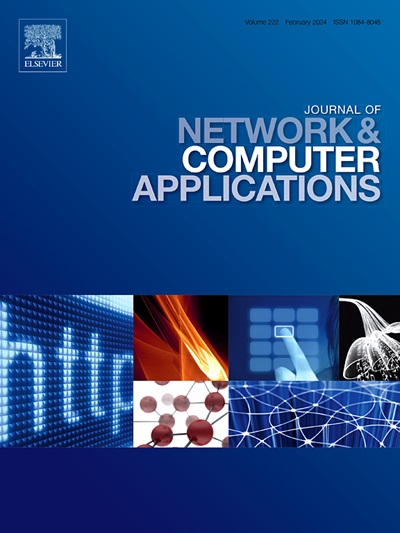SDN中基于IQR和DFFCNN的DDoS攻击检测方法
IF 8
2区 计算机科学
Q1 COMPUTER SCIENCE, HARDWARE & ARCHITECTURE
引用次数: 0
摘要
软件定义网络(SDN)是一种创新的网络架构,通过将数据平面与控制平面解耦来增强网络的灵活性。但是,SDN也面临着严峻的安全威胁。最具破坏性的威胁之一是分布式拒绝服务(DDoS)攻击,它可以破坏网络功能并对合法用户产生不利影响。目前针对SDN网络DDoS攻击的解决方案存在特征提取不足、检测模型泛化受限、对网络设备的数据请求频繁等问题。这些问题导致检测精度低,资源消耗高。提出了一种基于异常告警和深度检测的DDoS攻击检测方法。首先,我们利用四分位范围(IQR)的异常检测能力来监测每个交换机的packet_in消息率,并设计了动态阈值报警算法。该算法可以初步识别异常开关。此外,我们提出了一种集成特征选择方法来暴露最相关的流特征,并提取新的SDN流表特征。基于这些特征,我们设计了一个深度特征融合卷积神经网络(DFFCNN)模型来执行深度DDoS攻击检测。该模型将自关注机制与多尺度特征提取相结合,增强了其捕获数据模式的能力。在ids2017、IDS2018和ddos2019三个典型数据集上的实验结果表明,该方法的平均检测准确率为99.54%,假阳性率为0.53%。这比现有的检测方法提高了1.65%,并将假阳性率降低了1.38%。此外,所提出的两阶段检测方法比现有的轮询检测方法平均降低了12.8%的CPU利用率。本文章由计算机程序翻译,如有差异,请以英文原文为准。
A DDoS attack detection method based on IQR and DFFCNN in SDN
Software-Defined Networking (SDN) is an innovative network architecture that enhances network flexibility by decoupling the data plane from the control plane. However, SDN is also faces severe security threats. One of the most damaging threats is the Distributed Denial-of-Service (DDoS) attack, which can disrupt network functionality and adversely affect legitimate users. Current solutions against DDoS attacks in SDN encounter challenges such as inadequate feature extraction, limited generalization of detection models, and frequent requests for data from network devices. These issues result in low detection accuracy and high resource consumption. We propose a DDoS attack detection method based on abnormal alarm and deep detection. First, we use the anomaly detection capability of interquartile range (IQR) to monitor the packet_in message rate of each switch and design a dynamic threshold alarm algorithm. This algorithm can preliminarily identify abnormal switches. In addition, we propose an integrated-feature-selection method to expose the most-relevant flow features, and extract new SDN flowtable features. Based on these features, we design a Deep Feature Fusion Convolutional Neural Network (DFFCNN) model to execute deep DDoS attack detection. This model combines a self-attention mechanism with multi-scale features extraction, enhancing its ability to capture data patterns. Experimental results on three typical datasets—IDS2017, IDS2018, and DDoS2019—demonstrate that the proposed method achieves an average detection accuracy of 99.54 % and a false positive rate of 0.53 %. This represents an improvement of 1.65 % over existing detection methods and reduces the false positive rate by 1.38 %. Additionally, the proposed two-stage detection method decreases CPU utilization by an average of 12.8 % to the existing polling detection method.
求助全文
通过发布文献求助,成功后即可免费获取论文全文。
去求助
来源期刊

Journal of Network and Computer Applications
工程技术-计算机:跨学科应用
CiteScore
21.50
自引率
3.40%
发文量
142
审稿时长
37 days
期刊介绍:
The Journal of Network and Computer Applications welcomes research contributions, surveys, and notes in all areas relating to computer networks and applications thereof. Sample topics include new design techniques, interesting or novel applications, components or standards; computer networks with tools such as WWW; emerging standards for internet protocols; Wireless networks; Mobile Computing; emerging computing models such as cloud computing, grid computing; applications of networked systems for remote collaboration and telemedicine, etc. The journal is abstracted and indexed in Scopus, Engineering Index, Web of Science, Science Citation Index Expanded and INSPEC.
 求助内容:
求助内容: 应助结果提醒方式:
应助结果提醒方式:


